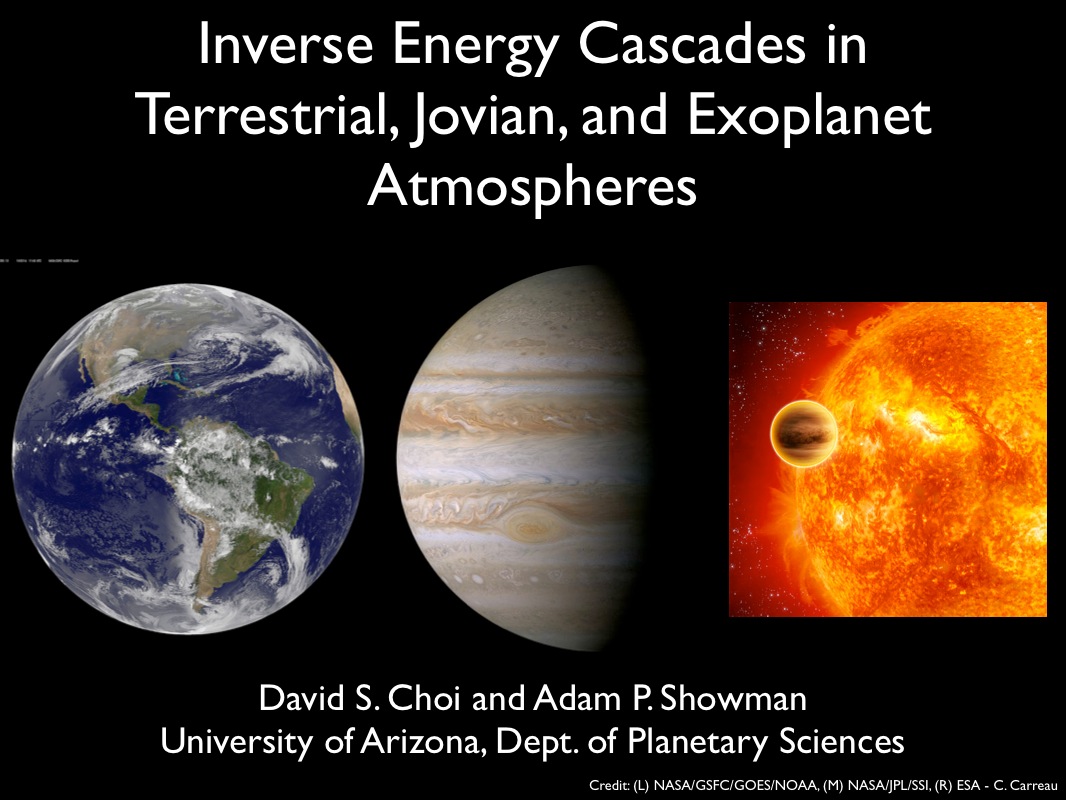Comparative planetology > David Choi
Inverse energy cascades
in planetary atmospheres
David Choi
University of Arizona, USA
in planetary atmospheres
David Choi
University of Arizona, USA



Abstract: The circulation of planetary atmospheres is often dominated by jet streams and vortices with large horizontal dimensions. The existence of such features, while potentially resulting from a variety of mechanisms, are promoted by the natural tendency of quasi- two-dimensional fluids − like atmospheres − to turbulently transfer energy from small length scales to large ones. Under appropriate conditions, this process − known as an inverse energy cascade − can generate meteorological features at the planetary scale even when the turbulent instabilities that energize the circulation exhibit very small length scales. In the context of exoplanets, such inverse cascades, if present, could play a crucial role by generating global-scale meteorology that is amenable to characterization via lightcurve mapping and other techniques that cannot resolve the planetary disk. Here, we examine the evidence for inverse energy cascades, and evaluate their potential for shaping the global-scale circulation, across planetary atmospheres. We first review observational and numerical modeling studies that have investigated the inverse cascade in Earth's atmosphere. Classic studies of atmospheric kinetic energy and passive tracers provide compelling evidence, though questions exist even for this best- studied case. Next, we evaluate the evidence at Jupiter and Saturn, where the weaker friction may better allow the unimpeded existence of an inverse cascade. We present a new observational data set, based on an analysis of Cassini images, supporting the existence of an inverse cascade in Jupiter's atmosphere. Finally, we survey the conditions that could allow inverse energy cascades to exist in typical exoplanetary atmospheres and discuss the observational implications.
Additional materials: PDF of slides
ExoClimes 2010, Exeter, Tuesday 7th Sep 2010
Additional materials: PDF of slides
ExoClimes 2010, Exeter, Tuesday 7th Sep 2010
